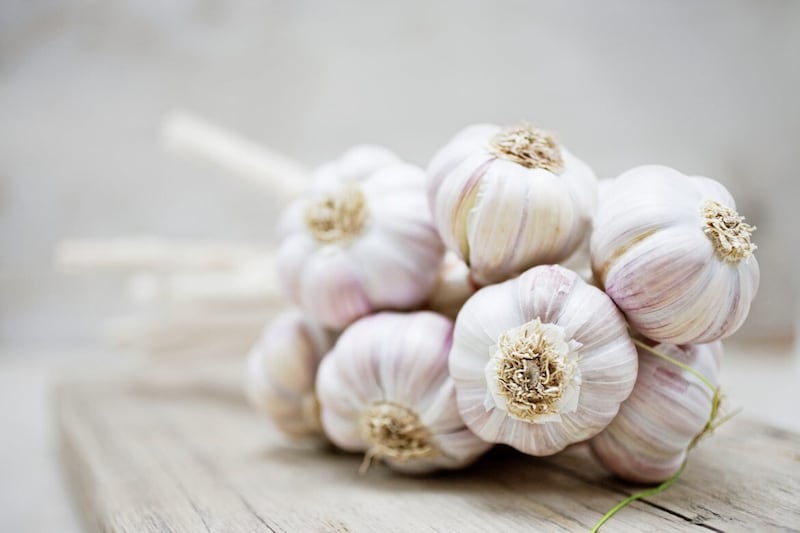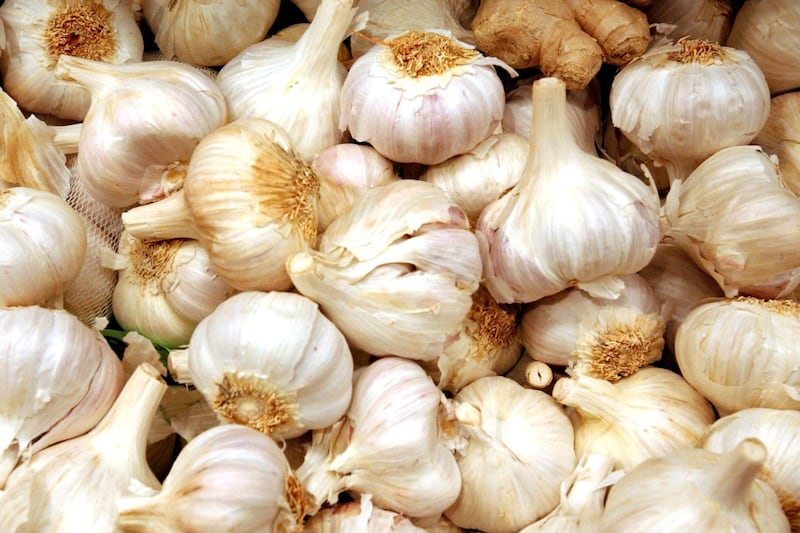Life as represented by growth and greenery has all but disappeared from the garden and the arrival of winter can now be counted in days rather than weeks. All but the last leaves have been blown from the branches of deciduous trees and herbaceous perennials are retreating below ground. Short days and often sodden ground mean the garden isn't especially enticing at this time of year, so what little time you do spend outdoors is often confined to tidying up or preparing ground for next year.
Most plants effectively shut down during the coldest, darkest months of the year and live off nutrients stored in their roots. However, there are some hardy species out there that not only tolerate sub zero temperatures but rely on cold weather for optimum performance. Garlic, like many members of the allium family, is hardy and actually grows when all else around is dead or hibernating, so it's the perfect crop for keeping your green fingers active until spring arrives - though it really doesn't demand much attention.
Once regarded as exotic and the basis of food that was often dismissively referred to as 'foreign muck', garlic is now a mainstay of most Irish kitchens and can even feature, in modest quantities, as an ingredient in traditional dishes such as stew and the Sunday roast. Native to southern Asia, it has been used for millennia both in a culinary and medicinal context. The word garlic derives from Old English and means 'spear-shaped leek'.

Gardeners and especially hosta lovers also know how garlic can be employed as a deterrent against pests. Boil several cloves in water, then use the cooled liquid as a spray on the leaves of tender plants to fend off slugs and snails. It can also be deployed as a companion plant alongside tomatoes, carrots and any brassicas. Rose enthusiasts have been known to plant a handful of cloves in their beds to help deter not only gastropods but aphids and caterpillars too. However, it's best to keep garlic away from legumes like peas and beans, as it can stunt their growth.
One of the great advantages of growing garlic is that it doesn't require a lot of room. A sizeable plant pot, window box or even a repurposed fish box are perfect for accommodating what is a largely unfussy crop that really only needs to be kept weed free and watered during dry spells. Just ensure your growing medium is free-draining by adding John Innes No 2 compost or a few handfuls of horticultural grit. The so-called hardneck varieties, which produce the most intense flavours and often boast alluring, colourful skins, are best suited to autumn planting.
Read more:
- Casual Gardener: Being good to bees can help biodiversity
- Casual Gardener: They call it poppy love
There are dozens of varieties to choose from, with specialist online retailers offering an array of modern and heritage types, yet many gardeners simply opt for planting a bulb they've bought at the supermarket, which while scorned by purists, is usually just as effective.
Plant in a sunny spot and begin by breaking off cloves from the bulb before pushing them individually, flat side down to a depth of around 2.5cm-4cm so the tip is just below the surface. Left largely to its own devices, the garlic should be ready to harvest next summer. If you fancy something different, try elephant garlic (Allium ampeloprasum), which is closely related to leeks. It produces a big bulb with a handful of large cloves, which are milder in flavour.








